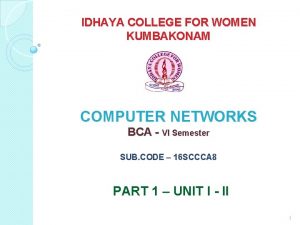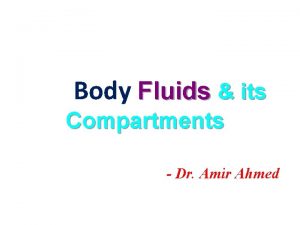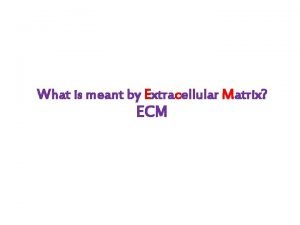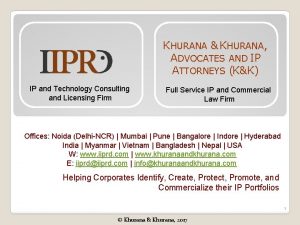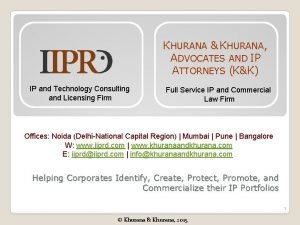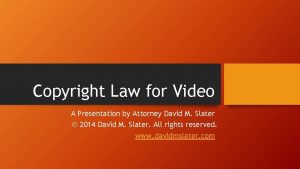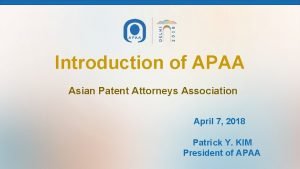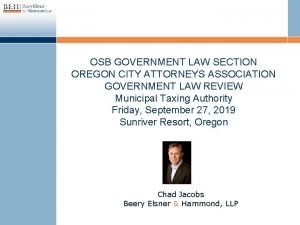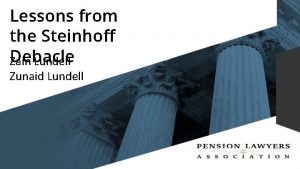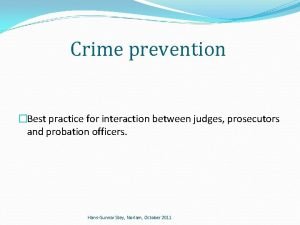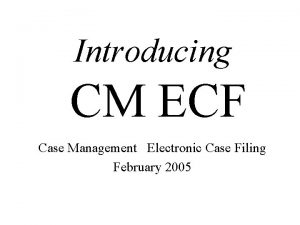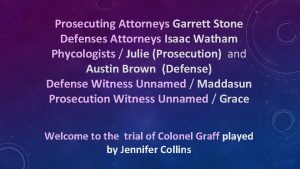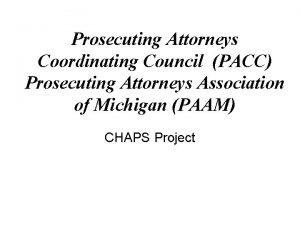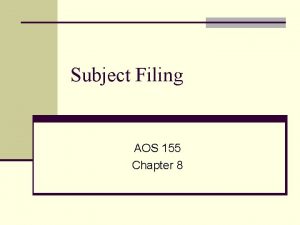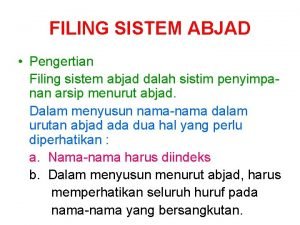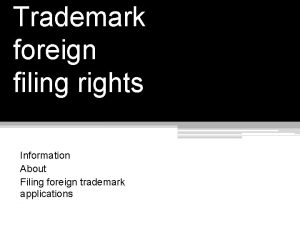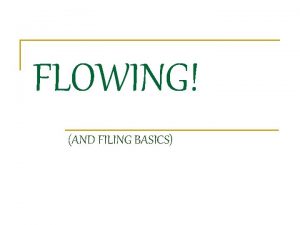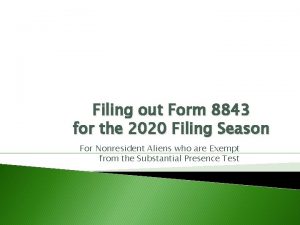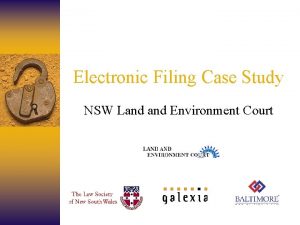ECF Electronic Case Filing Training for Attorneys Support














- Slides: 14

ECF Electronic Case Filing Training for Attorneys, Support Staff and the our Customers

ECF Objectives By the end of the class you will be able to: • Prepare documents for electronic filing • File documents electronically • View electronically file documents • Manage your user account options and password • Explain rules for electronic signatures, noticing, and retention of original documents.

ECF Benefits of ECF • Access to case files via internet 24/7 • Automatic e‑mail notice of case activity • Reduction in mail, courier, and copy fees

ECF Filing Tips for Attorneys

10 – Keep up the great work! l The number of documents filed by attorneys continues to increase.

9 – Remember to place your “s/” signature on all documents. l Attorney Signature. A pleading or other document requiring an attorney’s signature shall be signed in the following manner, whether filed electronically or submitted on disk to the Clerk’s Office: “s/ (attorney name). ” The correct format for an attorney signature is as follows: – s/ Judith Attorney Bar Number: 12345 Attorney for (Plaintiff/Defendant) ABC Law Firm 123 South Street Minneapolis, Minnesota 55415 Telephone: (612) 123 -4567 Fax: (612)123 -4567 E-mail: judith_attorney@law. com

8 - An attorney’s login and the “s/” on a document must match. An attorney/participant’s password issued by the court combined with the user’s identification (login), serves as and constitutes the attorney/participant’s signature. l If signing a document as local counsel, sign with your “s/” and then type “for” and the out-of-state attorney’s name. l

7 – Open all PDF documents before filing. Many documents are incomplete, upside down, or illegible. l Incorrect documents are attached. l – In order to verify that you have selected the correct document, right mouse click on the highlighted file name to open a quick menu and left mouse click on [open]. Adobe Acrobat or Acrobat Reader will launch and open the PDF document that you selected. You should view it to verify that it is the correct document.

6 – Proposed Order Tips l Do not combine motions and proposed orders into one document. – Electronically submitted proposed orders may not be combined with the motion into one document. The motion must be docketed prior to submitting the proposed order to the judge, and the proposed order must refer to the resulting docket entry number for the motion. l Submit proposed orders in Word. Perfect/Word compatible format and send to the correct e-mail address. – All proposed orders must be submitted in a format compatible with Word. Perfect, which is a “Save As” option in most word processing software. Judges and the Clerk’s Office will not accept proposed orders in. pdf format. – A proposed order should be attached to an Internet e-mail sent to the email address of the assigned judge. The judges’ e-mail addresses are listed in the Administrative Procedures and should only be used to submit proposed orders. – Remember to send the proposed order to all other counsel.

5 – Include a certificate of service on all documents. l l To determine whether another party is a registered user, the filer can select the System’s “Utilities” category, and then click on “Mailing Information for a Case” on the pull-down menu. A certificate of service on all parties entitled to service or notice is still required when a party files a document electronically. The certificate must state the manner in which service or notice was accomplished on each party so entitled.

4 – Know when to use your ECF login/password vs. PACER login/password. When viewing criminal documents and social security civil cases, enter ECF login/password first and PACER login/password second. l When viewing civil documents in all cases besides social security cases, no login/password is required when viewing documents for the first time. l

3 – Select the proper event. When filing a motion, you must use the motion event. If menu items do not appear, place mouse on a blank area of the screen->right click->select “refresh” If you are filing a notice of appeal to the 8 th Circuit, use the Notice of Appeal under the Appeal Documents to USCA.

2 – Attachments & Exhibits l l l Attachments and exhibits larger than two megabytes may be filed electronically in multiple two-megabyte segments. A filing party should electronically image, i. e. , “scan, ” a paper exhibit that is less than two megabytes and submit the exhibit as a. pdf file. A party submitting evidentiary materials in conventional format shall also file in conventional format an index of evidence listing each item of evidence then being filed and identifying the motion to which it relates. or may be submitted, bound, in conventional format.

1 – Ask questions and give us your feedback. Take a look at the Frequently Asked Questions on the Internet. l Call the Help Desk numbers for assistance. l Send questions and/or feedback, including your ideas for improvement. l – Send comments to ecfhelpdesk@mnd. uscourts. gov or call us.
 Sdlc in computer networks
Sdlc in computer networks Bioimpedância
Bioimpedância Ecf icf and interstitial fluid
Ecf icf and interstitial fluid Ecf volume deficit
Ecf volume deficit Ecf
Ecf Intercellular matrix
Intercellular matrix Icf and ecf
Icf and ecf Ecf wsfcs
Ecf wsfcs Khurana & khurana advocates and ip attorneys (delhi branch)
Khurana & khurana advocates and ip attorneys (delhi branch) Khurana & khurana advocates and ip attorneys
Khurana & khurana advocates and ip attorneys Video copyright attorneys
Video copyright attorneys Asian patent attorneys association
Asian patent attorneys association Oregon city attorneys association
Oregon city attorneys association Zain lundell
Zain lundell Norlam attorneys
Norlam attorneys
